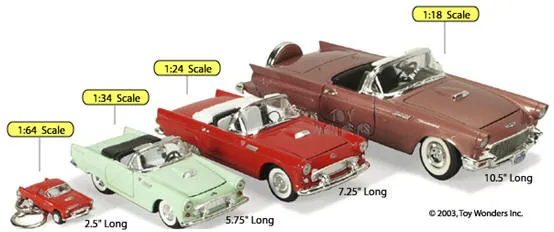What is a Diecast Car?
Diecast cars, also known as die-cast models, are miniature vehicles made using a specific manufacturing process. The term “diecast” refers to the method of production, where molten metal is injected into a mold (or “die”) under high pressure. This process allows for intricate detailing and accurate reproduction of the original vehicles. These models are not just toys, they are highly collectible items and can represent a significant investment for enthusiasts. The appeal of diecast cars lies in their realism, the variety of models available, and the nostalgia they evoke for many collectors. The ability to own a miniature replica of a car you admire, or one from your past, is a powerful driver behind the diecast hobby. The craftsmanship involved, from the initial design to the final paint job, is a testament to the dedication of manufacturers and the passion of collectors.
The Manufacturing Process
The die-casting process is the core of diecast car production. It starts with the creation of a mold, usually made of steel, designed to match the exact specifications of the car model. Molten metal, typically a zinc alloy, is injected into this mold under high pressure. This high pressure forces the metal into every crevice of the mold, capturing even the finest details. Once the metal cools and solidifies, the mold is opened, and the formed car parts are extracted. These parts then undergo further processing, including trimming excess metal, adding plastic components, and ultimately painting and assembling the final product. This manufacturing technique allows manufacturers to produce complex shapes with high precision and in large quantities, making diecast cars affordable and widely available.
Materials Used in Diecast Cars
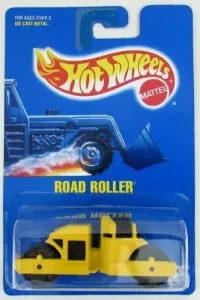
The materials used in diecast cars are crucial to their quality, durability, and appearance. The primary material is a zinc alloy, chosen for its ability to be cast with precision, its strength, and its ability to hold paint well. Other materials, like plastic, are used to create various components, such as interiors, tires, and sometimes even chassis parts. The combination of metal and plastic allows for a balance of detail, durability, and cost-effectiveness. The quality of the materials directly affects the overall feel and value of the model, making it an important consideration for both manufacturers and collectors. The right combination of materials contributes to the model’s realistic look and the ability to withstand the test of time, making it a cherished item for years to come.
Zinc Alloy
Zinc alloy is the backbone of most diecast car models. This alloy is typically composed of zinc, along with small amounts of aluminum, magnesium, and copper. The specific composition can vary depending on the manufacturer and the desired properties of the finished product. Zinc alloy’s low melting point makes it ideal for the die-casting process. It allows for intricate designs and tight tolerances, enabling manufacturers to capture every detail of the original car. The alloy’s strength and durability mean that the car can withstand handling and storage. Zinc alloy is also an excellent surface for painting and decorating, allowing manufacturers to create realistic and visually stunning models. This material provides the base structure, feel, and weight that collectors appreciate, making it an indispensable element of diecast car production.
Plastic Components
While zinc alloy forms the main body of diecast cars, plastic components play a crucial role in adding detail and functionality. Plastic is used for a variety of parts, including the interior (seats, dashboards, steering wheels), tires, windows, headlights, and sometimes even chassis parts. Plastic allows for the creation of complex shapes and textures that would be difficult or impossible to achieve with metal. The use of plastic also helps to reduce the overall cost of production, and plastic parts are easily painted and decorated to match the car’s original design. The type of plastic used can vary, from hard plastics for the body and chassis parts to softer, more flexible materials for the tires. The combination of plastic and metal is essential to creating a realistic and detailed miniature car, adding both visual appeal and functional elements to the finished product. The use of plastic provides manufacturers with flexibility, allowing them to recreate intricate designs while maintaining affordability.
Why Diecast Cars are Popular
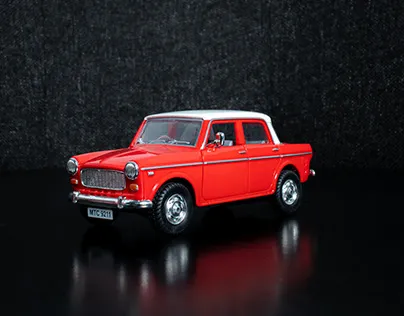
Diecast cars enjoy immense popularity due to several factors. One of the most significant is the level of detail and realism these models offer. Collectors appreciate the precise reproduction of vehicles, often down to the smallest details. The wide variety of available models is another factor. From classic cars and modern sports cars to trucks, buses, and even construction vehicles, there’s a diecast model to suit every taste. The nostalgia factor also plays a role. Many collectors are drawn to models of cars they owned, admired, or dreamed of owning. Diecast cars represent a tangible link to the past and a way to celebrate the beauty of automotive design. Furthermore, collecting diecast cars can be a relatively affordable hobby, and the value of certain models can appreciate over time, making it an appealing investment. The community of diecast enthusiasts is another significant factor, as it provides a platform for sharing knowledge, trading models, and connecting with like-minded individuals.
Collecting and Displaying Diecast Models
Collecting diecast models is a rewarding hobby that offers various ways to express personal interests. Collectors may focus on specific brands, types of vehicles, or even scales. Some collectors seek rare or limited-edition models, while others appreciate a wide variety of models. Displaying diecast cars is a significant part of the hobby, allowing collectors to showcase their collections and share their passion with others. Display options range from simple shelves and display cases to elaborate dioramas that recreate scenes from history or popular culture. Many collectors create themed displays, organizing their models by manufacturer, era, or even color. The way a collection is displayed can add significant value to the experience of collecting, transforming a hobby into a visual art form. The display also protects the cars from dust and damage, ensuring their long-term preservation and value.
Different Scales of Diecast Cars
Diecast cars come in various scales, which determine their size relative to the original vehicles. Common scales include 1:18, 1:24, 1:43, and 1:64. Each scale offers a different balance of detail, size, and price. The choice of scale often depends on personal preference, available display space, and the types of models the collector enjoys. Larger scales, such as 1:18, offer more detail but require more display space and tend to be more expensive. Smaller scales, such as 1:64, are more compact and affordable, making them ideal for starting a collection or for those with limited space. The scale of a diecast car significantly affects its appearance and the level of detail that can be achieved. For collectors, the scale chosen can influence the type of models they collect, the space required to display them, and the overall cost of their hobby. Understanding scales is essential for any serious collector, as it affects both the purchasing decisions and the display planning.
1 18 Scale
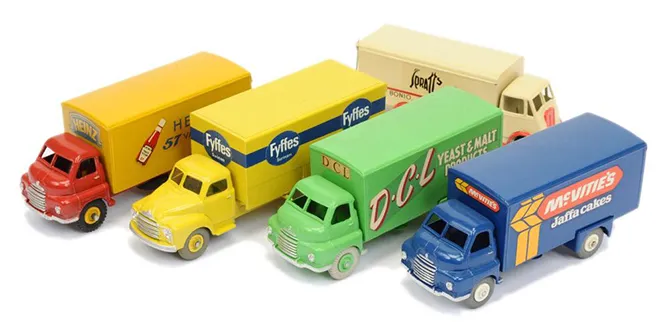
The 1:18 scale is a popular choice for diecast car collectors, offering a good balance of detail and size. Models in this scale are approximately 1/18th the size of the original car. This size allows for a high level of detail, with intricate features such as opening doors, hoods, and trunks, detailed engine compartments, and realistic interiors. 1:18 scale models are typically larger than other scales, making them more visually striking and allowing for greater appreciation of the model’s craftsmanship. While they require more space for display, their size makes them a focal point in any collection. This scale often includes advanced features, such as working steering and suspension, which adds to the realism and collector value of the models. The 1:18 scale is favored by collectors who appreciate detail, craftsmanship, and a more substantial presence in their display.
1 43 Scale
The 1:43 scale is another widely popular choice, particularly among those who enjoy collecting a variety of models. Cars in this scale are 1/43rd the size of the original. It provides a good balance between detail, affordability, and display space. While 1:43 models may not feature as many moving parts as 1:18 scale models, they still offer considerable detail, especially regarding paint finishes, decals, and interior details. This scale is convenient for collectors who wish to amass a larger collection without needing a large display area. Due to their more compact size, 1:43 models are often more affordable than larger scales. The 1:43 scale is frequently chosen by collectors who wish to represent a wide range of vehicle types, and historical periods. The scale’s manageability and affordability make it an ideal entry point for many enthusiasts, allowing them to build extensive collections without being overwhelmed by space or cost constraints.
Where to Find Diecast Cars
Diecast cars are available through various channels, making it easy for collectors to find the models they want. The best places to begin searching for diecast cars include online retailers, specialty shops, and trade shows. Knowing where to look is key to finding the right models and expanding your collection. Each source offers unique benefits, such as wide selections, competitive pricing, or rare finds. Researching and comparing options is crucial to making informed purchasing decisions. Keeping track of new releases, limited editions, and other special offerings is a way to stay updated. By exploring the various available resources, collectors can ensure they find the perfect models to satisfy their collecting desires.
Online Retailers
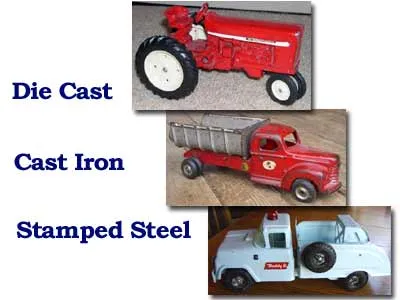
Online retailers offer a convenient and expansive selection of diecast cars. Major online marketplaces, such as Amazon, eBay, and specialized diecast stores, have a wide variety of models from various manufacturers. This allows collectors to compare prices, read reviews, and browse an extensive range of vehicles from the comfort of their homes. Online retailers often provide detailed product descriptions and high-quality images, helping collectors make informed decisions. They can also offer competitive pricing and frequent sales promotions, making it an appealing option for budget-conscious collectors. The ability to quickly search for specific models, brands, or scales makes online retailers an efficient way to find desired items. However, it is essential to research the seller’s reputation and shipping policies to avoid potential issues. Online shopping offers unmatched convenience and choice, making it a primary source for diecast car enthusiasts.
Specialty Shops
Specialty shops dedicated to diecast cars provide a curated selection and a more personal experience for collectors. These shops often stock rare, limited-edition, and vintage models that are not readily available through major online retailers. The knowledgeable staff can offer expert advice, assist in finding specific models, and provide insights into the hobby. These shops create a strong sense of community among collectors, with opportunities to meet other enthusiasts, trade models, and attend special events. Specialty shops often stock models from niche manufacturers or offer pre-order options for upcoming releases. They are an excellent resource for collectors seeking a more personalized experience and wanting to discover unique additions to their collection. Visiting a specialty shop can turn a hobby into a social activity, with the added benefit of expert guidance and access to exclusive items. The staff’s passion and expertise can enhance your collecting experience and introduce you to new models and brands.
Understanding the Value of Diecast Cars
Understanding the value of diecast cars is essential for collectors, whether they are just starting or have been collecting for years. Factors such as rarity, condition, and brand play a significant role in determining a model’s worth. Collectors are often interested in how their models are valued and what affects their value. Being informed about these factors allows collectors to make smart purchasing decisions, preserve the value of their collections, and understand the potential investment value of specific models. Recognizing the dynamics of value assessment helps collectors appreciate the nuances of the hobby and maintain their collections with care and precision. Valuing diecast cars is a blend of market knowledge and personal appreciation.
Factors Affecting Value

Several factors influence the value of diecast cars. Rarity is a significant determinant; limited-edition models or those with low production runs often command higher prices. The model’s condition is crucial, with models in mint condition, still in their original packaging, being the most valuable. The manufacturer of the diecast car influences its value, as well-known brands with a reputation for quality and detail often command higher prices. The scale of the model can influence value, with the more popular scales like 1:18 and 1:43 having a more active market. Historical significance and models representing iconic vehicles or events can increase a model’s value. The original packaging and any accompanying documentation are critical for preserving and adding value. The presence of original packaging helps to protect and preserve the model. Market demand and the popularity of a particular model also impact its value. Understanding these factors helps collectors evaluate the worth of their diecast cars and make informed decisions when buying, selling, or trading models.
Rarity and Collectibility
Rarity and collectibility are fundamental aspects of the value of diecast cars. Limited-edition models, those produced in small quantities, are highly sought after by collectors due to their scarcity. Models representing historical events or significant vehicle types also become highly collectible. The collectibility of a model is often driven by factors such as nostalgia, brand reputation, and the demand from collectors. Collectors often seek models that hold a special connection to their interests, such as cars they have owned or cars from their childhood. The quality of detail, the accuracy of the model, and the reputation of the manufacturer add to its collectibility. The market for diecast cars fluctuates based on trends, with specific models, brands, and themes gaining popularity at different times. The investment value of diecast cars often stems from their rarity and collectibility. Keeping track of trends, understanding limited editions, and recognizing what makes a model unique helps collectors make informed decisions and enhance the value of their collections.
Caring for and Maintaining Your Diecast Collection
Caring for and maintaining a diecast car collection ensures that the models remain in excellent condition and retain their value over time. Proper cleaning, storage, and handling are essential to protect the cars from damage. Regular maintenance can prevent the accumulation of dust and dirt and helps to preserve the paint and other delicate features. Proper care will extend the life of your collection. Implementing these practices maintains the condition of the models and safeguards their potential investment value. Proper storage, regular cleaning, and the careful handling of the models are simple steps that can make a huge difference in the preservation of your collection. Regular maintenance is a critical aspect of enjoying diecast cars for years to come.
Cleaning and Storage

Cleaning and storage are essential components of diecast car care. Dust and dirt can accumulate on the models, potentially damaging the paint and intricate details. Cleaning the models using a soft brush, a microfiber cloth, and mild soap is recommended. Harsh chemicals and abrasive materials should be avoided. Proper storage is crucial, preventing dust and protecting the models from sunlight, extreme temperatures, and humidity. Displaying the models in a closed cabinet or display case will minimize dust accumulation. Storage boxes or protective sleeves can safeguard models not currently on display. Ensuring the models are stored in a dry, temperature-controlled environment can prevent corrosion and other forms of damage. Proper cleaning and storage will extend the lifespan of your collection and preserve their condition.
Protecting Against Damage
Protecting your diecast cars against damage is critical for maintaining their value and appearance. Handle the models with care, using clean hands to avoid leaving fingerprints or scratches. Keep the models away from direct sunlight to prevent fading of the paint. Protect the models from extreme temperatures, which can damage the plastic components or lead to paint issues. Store the models in a safe place, away from pets and children who could accidentally cause damage. Transport the models carefully, using protective packaging. Regular inspection for damage, such as loose parts or paint chips, allows for prompt repair. By taking these preventive measures, collectors can safeguard their models, prevent potential damage, and preserve their long-term value and enjoyment of the diecast car collection. Protecting the models ensures the collection remains a source of enjoyment for years to come.
